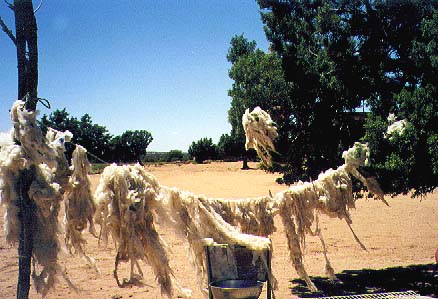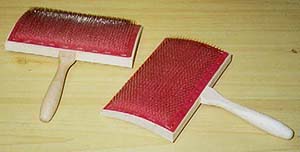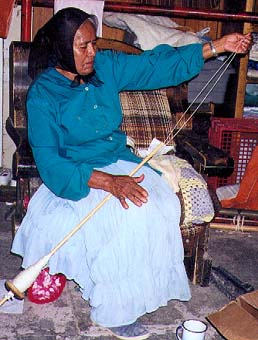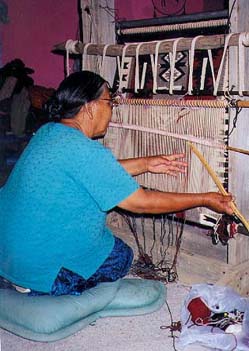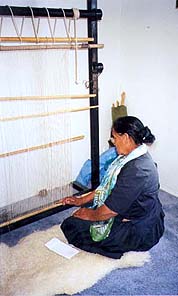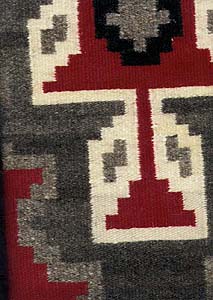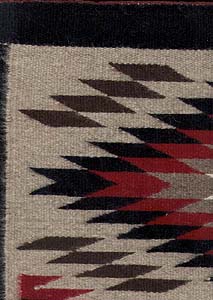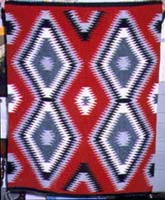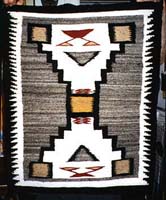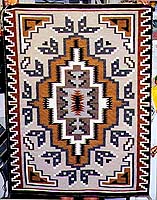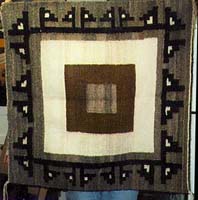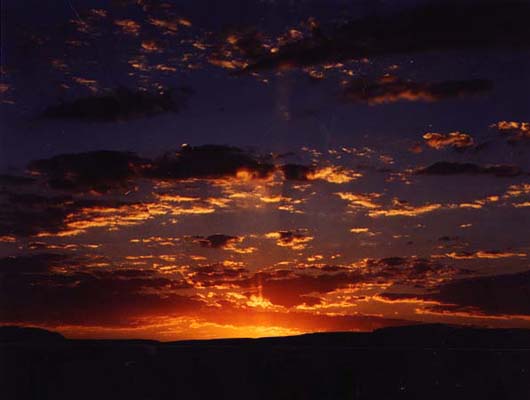Weavers |
Weavings | Wool
| Wool Buy | About
Churro | Jewelry | Pottery | Clothing | Baskets | Pipes & Firestarters |HerbsWerk|
Home
ABOUT THE BLACK MESA CHURRO...
"I put this livestock here for you; it is your father and your mother, your thoughts and your mind. You will have children and grandchildren and so forth as times goes on, your livestock is going to be your life." (--Relocation Booklet, Teesto, Arizona)" (from Time Among the Navajo: Traditional Lifeways on the Reservation, Kathy Eckles Hooker, photographs by Helen Lau Running, Salina Bookshelf, Flagstaff, Arizona, 2002, p. 65).
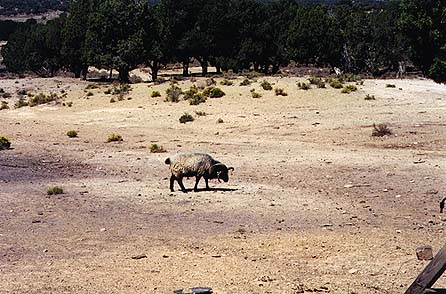
A churro ram on Black Mesa. Given the remoteness and traditional
life style of the Black Mesa Dine', it is very likely that their
sheep are directly descended from the original churro brought
into the southwest by the Spanish 500 years ago.
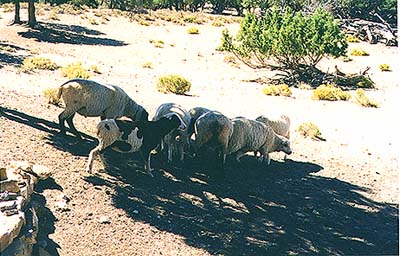
Flock on Big Mountain, including a black and white sheep.

Sheep in corral on Big Mountain.

Sheep corraled under the protection of sacred Star Mountain.
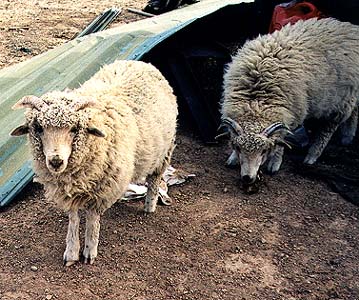 Two "pet"
sheep. These are "protectors of the flock" and will
live out their natural lives to a good old age.
Two "pet"
sheep. These are "protectors of the flock" and will
live out their natural lives to a good old age.
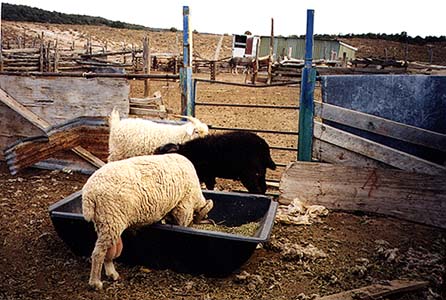 Corraled
sheep eating the hay distributed at our September 14, 2000, hay
run. So-called "excess" or "unpermitted"
sheep are confiscated by the Bureau of Indian Affairs, sold at
public auction if their owners cannot afford the exorbitant cost
of redeeming them (for example, $891.29 charged to hold 7 ewes
for 5 days), and the money kept by the BIA).
Corraled
sheep eating the hay distributed at our September 14, 2000, hay
run. So-called "excess" or "unpermitted"
sheep are confiscated by the Bureau of Indian Affairs, sold at
public auction if their owners cannot afford the exorbitant cost
of redeeming them (for example, $891.29 charged to hold 7 ewes
for 5 days), and the money kept by the BIA).
The tax-deductible portion of the Black Mesa Weavers for Life
and Land wool and weaving sales is used to buy hay for corraled
livestock, pay for livestock permits, redeem confiscated livestock
from impoundment, and for other life-saving humanitarian needs.
Some of the general fund will now be used to cover expenses for
the volunteers who are undertaking the N-CSA registry process,
which includes gas for travel to farflung and widespread areas,
disposable cameras to take photos of the sheep, and eartags and
eartagging or tattooing equipment.
The money that goes to the sheepraisers and weavers enables the
Dine' to hold onto their flocks and survive.
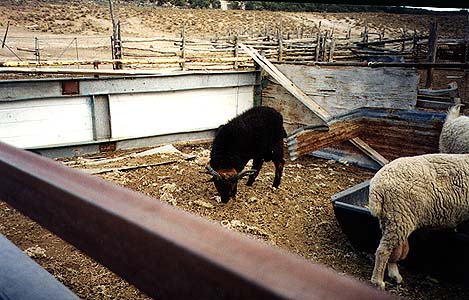
Churro sheep eating alfalfa hay from the September 14, 2000,
hay run.
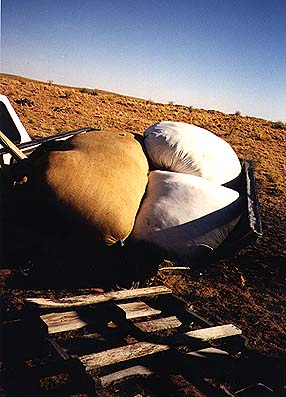
Unsold wool, Coal Mine Mesa community, September 2000.
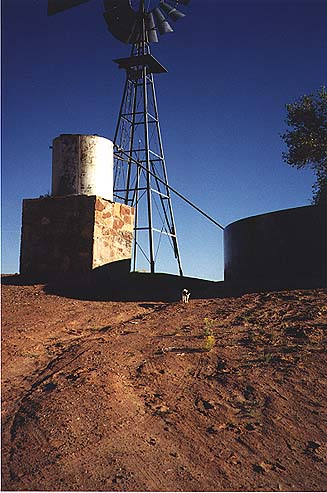
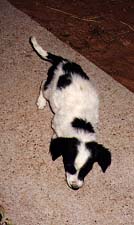
In September 2000, I traveled around Coal Mine Mesa with a Dine'
resident, and she pointed out this once-working windmill and
old Dine' well. The Bureau of Indian Affairs (BIA) had padlocked
the windmill to prevent the Dine' from having a nearby source
of water, and to hasten their "relocation" from their
homes. As we approached the now dry and waterless well, a little
sheepdog puppy, about 10 weeks old, dying of thirst, staggered
out to meet us. We gave the puppy water, he revived, and we took
him home and named him "Nilchii Ashkie" (Windy Boy)...
a survivor...

Orphan lamb being cared for at home, until old enough to
be returned to the flock.

Shearing sheep at Glenna Begay's home, Black Mesa, spring
1999.

